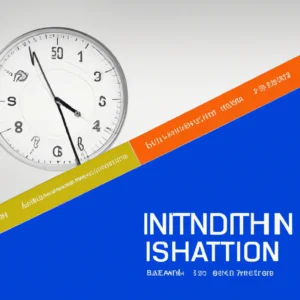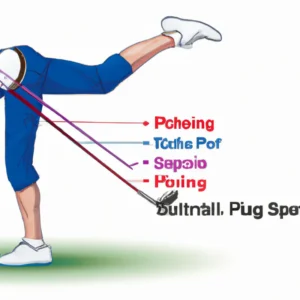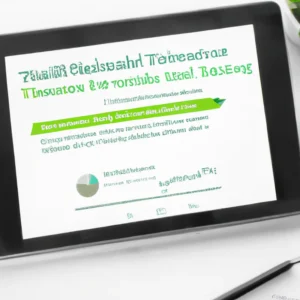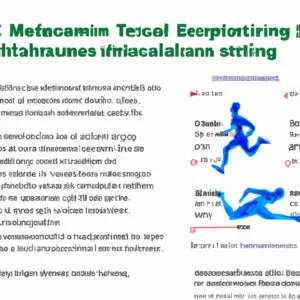**”The Role of Breathing Techniques in Enhancing Recovery During CrossFit Workouts: How Controlled Breathing Can Optimize Performance and Reduce Fatigue”**
The Role of Breathing Techniques in Enhancing Recovery During CrossFit Workouts: How Controlled Breathing Can Optimize Performance and Reduce Fatigue
CrossFit has gained immense popularity as a high-intensity workout regimen that combines elements of weightlifting, cardio, and gymnastics. However, with this intensity often comes fatigue, which can hinder performance and recovery. Fortunately, many athletes overlook a crucial aspect of their training: breathing techniques. This blog post delves into how controlled breathing can enhance recovery during CrossFit workouts, optimize performance, and reduce fatigue.
Understanding the Importance of Breathing
Breathing is often taken for granted; however, it plays a pivotal role in our physical performance. When we engage in high-intensity workouts like CrossFit, our body requires an increased oxygen supply to fuel our muscles and expel carbon dioxide. Consequently, the effectiveness of our breathing can significantly impact our workout efficiency and recovery times.
The Science Behind Breathing and Performance
When we breathe deeply and effectively, our body is better equipped to deliver oxygen to the muscles. Moreover, controlled breathing can activate the parasympathetic nervous system, which helps regulate stress and promotes relaxation. On the other hand, shallow or rapid breathing can lead to hyperventilation, resulting in increased fatigue and decreased performance. Therefore, understanding the mechanisms of breath control can be a game-changer for CrossFit athletes.
Breathing Techniques to Incorporate in CrossFit
Diaphragmatic Breathing
One of the most effective techniques is diaphragmatic breathing, which involves using the diaphragm to draw air deep into the lungs. This technique not only maximizes oxygen intake but also promotes relaxation. To incorporate diaphragmatic breathing, start by lying on your back with your knees bent. Place one hand on your chest and the other on your abdomen. As you inhale deeply through your nose, aim to raise your abdomen rather than your chest. This method helps to engage the diaphragm and can be practiced both during workouts and recovery periods.
Box Breathing
Box breathing is another powerful technique that can enhance focus and recovery. This method involves inhaling for a specific count, holding the breath, exhaling, and then holding the breath again for the same count. For example, inhale for four counts, hold for four counts, exhale for four counts, and hold again for four counts. This technique not only helps in calming the nervous system but also provides a structured approach to breathing, which can be beneficial during high-stress workouts.
Pursed-Lip Breathing
Pursed-lip breathing is particularly useful during recovery periods between intense exercises. By inhaling through your nose and exhaling slowly through pursed lips, you can help regulate your breathing and maintain optimal oxygen levels. This technique is beneficial during high-intensity intervals, allowing athletes to recover more effectively before the next round of exertion.
Nutrition Tips for Enhanced Recovery
While breathing techniques are essential, they should be complemented by proper nutrition for optimal recovery. Therefore, consider the following dietary strategies:
Hydration
Staying hydrated is crucial for muscle function and recovery. Water aids in digestion, nutrient absorption, and temperature regulation. Additionally, electrolytes play a vital role in muscle contractions. Therefore, ensure you are adequately hydrated before, during, and after workouts.
Nutrient Timing
Post-workout nutrition is crucial for recovery. Consuming a balanced meal rich in protein and carbohydrates within 30 minutes of your workout can help replenish glycogen stores and repair muscle tissues. For example, a protein shake combined with a banana is an excellent choice to kickstart recovery.
Anti-Inflammatory Foods
Incorporating anti-inflammatory foods such as berries, leafy greens, and fatty fish can help reduce muscle soreness and promote recovery. These foods contain antioxidants and omega-3 fatty acids, which are known to combat inflammation.
Health Benefits of Controlled Breathing
The advantages of incorporating controlled breathing into your CrossFit routine extend beyond immediate performance enhancements.
Stress Reduction
Proper breathing techniques can significantly reduce stress levels. By activating the parasympathetic nervous system, you can achieve a state of calm, which is particularly beneficial after intense workouts. Consequently, this can improve your overall mental health and well-being.
Enhanced Focus and Concentration
Controlled breathing promotes mental clarity and focus. During CrossFit workouts, maintaining concentration is vital for executing movements correctly and preventing injuries. By practicing breathing techniques, you can improve your ability to focus on the task at hand.
Improved Recovery Times
Finally, incorporating breathing techniques can lead to improved recovery times. By enhancing oxygen delivery to muscles and promoting relaxation, athletes may experience less fatigue and faster recovery between workouts. Therefore, this can lead to more effective training and better results over time.
Conclusion
In conclusion, the role of breathing techniques in enhancing recovery during CrossFit workouts cannot be overstated. By incorporating diaphragmatic breathing, box breathing, and pursed-lip breathing into your routine, you can optimize your performance, reduce fatigue, and improve your overall well-being. Additionally, complementing these techniques with proper nutrition will further enhance your recovery and performance. As you continue your CrossFit journey, remember that mastering your breath can be just as important as mastering your lifts. Embrace the power of controlled breathing, and watch your CrossFit performance soar.
FAQ
Why are breathing techniques important during CrossFit workouts?
Breathing techniques are crucial during CrossFit workouts because they enhance oxygen delivery to the muscles, promote relaxation, and help regulate stress. Effective breathing can prevent hyperventilation, reduce fatigue, and ultimately improve performance and recovery times.
What are some effective breathing techniques to incorporate into CrossFit training?
Some effective breathing techniques include diaphragmatic breathing, box breathing, and pursed-lip breathing. Diaphragmatic breathing maximizes oxygen intake and promotes relaxation, box breathing helps calm the nervous system and enhance focus, and pursed-lip breathing aids recovery between intense exercises by regulating breath and maintaining optimal oxygen levels.
How can nutrition complement breathing techniques for better recovery?
Proper nutrition can complement breathing techniques by ensuring that the body has the necessary nutrients to recover effectively. Staying hydrated, timing nutrient intake post-workout, and incorporating anti-inflammatory foods can help replenish glycogen stores, repair muscle tissues, and reduce muscle soreness, thereby enhancing the overall recovery process.















Post Comment